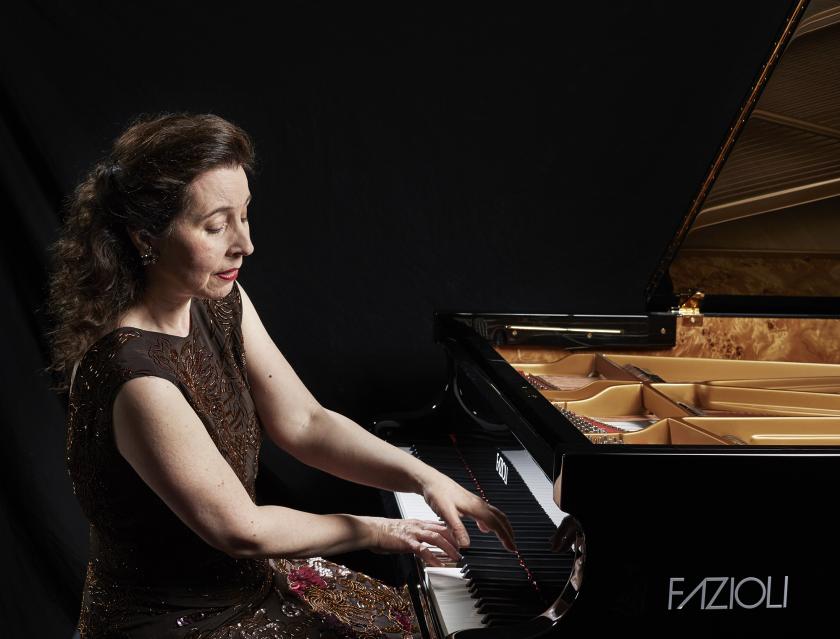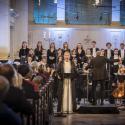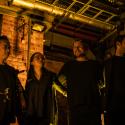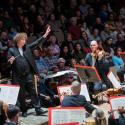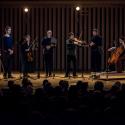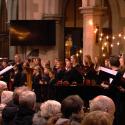Bach specialists like to explain that the second book of preludes and fugues in The Well-Tempered Clavier, composed around 1740 and thus almost two decades after the first, draws on more of the fancy and daring “modern” music of its time than its more traditional predecessor. Yes, but there’s modern and there’s modern. I don’t think the scholars have yet argued that, among the ear-stretching range of moods and effects encompassed across these 24 pieces, comes a spooky anticipation of Seattle grunge. Listening to Angela Hewitt play the F minor prelude at the Wigmore Hall, with its plaintive sighing motif, brought to mind nothing so much as the chorus of Nirvana’s “Smells like teen sprit”. Bach: forever young.
I don’t think that Sviatoslav Richter, still less Sir András Schiff, would have reminded me of Kurt Cobain at this point. Not even, maybe, Edwin Fischer, whose pioneering 1930s recordings set a benchmark for rhythmic vitality and fluidity that still make his WTC a revelation. Hewitt, her sound turbo-charged by a signature Fazioli piano, delivered a stadium-strength WTC that sometimes threatened to blow the roof off a hall perhaps more accustomed to gentler sonorities. Not that the Canadian pianist lacked subtlety. Over a quarter-century, after two separate recordings of the WTC and now a further re-examination as part of her four-year “Bach Odyssey” global tour, she has time and again proved herself a flexible and questioning interpreter who mines new insight from each piece as she digs deeper into the fathomless riches of this music. Yesterday, though, she offered us plenty of unapologetic showmanship: lavish rubatos, stretched tempi, huge fortissimo climaxes, fugues that began with single-handed hammer-blow assaults like some highly cultivated Viking berserker charging into battle.
I lack any qualifications to enter the piano-marque wars, but I can see why the Fazioli often proves the Marmite of the instrumental world. On the one hand: wow! For a version, and an artist, such as these, this roaring vehicle let the stupendous range of colours and textures that Bach wrings from the prelude-and-fugue template – time-worn by 1740 – glow and throb with an all-singing, all-dancing intensity. It accentuated the drama of the writing at every turn. Wary Bach newcomers who feared that three hours of 18th-century keyboard “exercises” (interrupted by a single interval) might prove soporific would have had a shock in store. In Hewitt’s hands, not only the inner dialogues within each piece but the startling shifts from one prelude-fugue pair to another sang out clear and (often) loud. I’ve spent long evenings at the opera that rewarded me with only a tiny fraction of the musical action on display at the Wigmore. 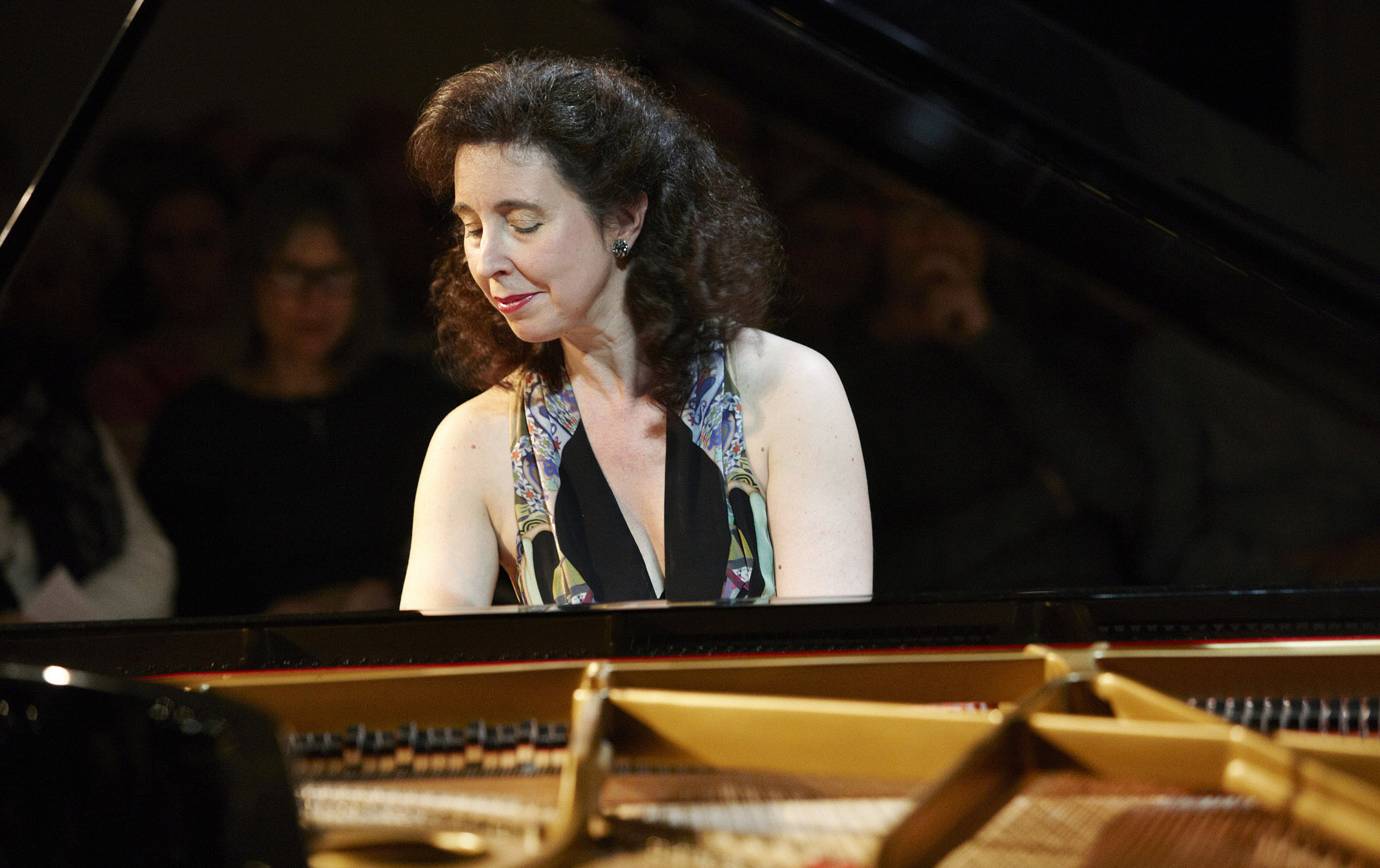 Yet I did occasionally miss the serenity, the contemplative inwardness, of some other performances. If Schiff can channel the WTC into a steadily-flowing stream of pure water (or pure spirit?), then Hewitt in this vein serves up a heady cocktail packed with delicious fruity bits and topped with a coloured paper umbrella. To repeat: this has nothing to do with any ivory-thumping vulgarity on her part. On the contrary: her wonderfully clear articulation revealed a searching structural intelligence at work throughout. The separate voices stood out with utmost clarity, as in the glorious contrapuntal magic – or mysticism – of the F# minor fugue. Yet even here, Hewitt – at this stage of her Bach journey – always radiates a communicative warmth and boldness. She opens the door into the sometimes-secret world of the WTC far wider than other, more private or even esoteric, readings. Those big, broad Fazioli tones have something to do with the appeal. Mostly, though, it’s her – and the results, usually, dazzle and thrill.
Yet I did occasionally miss the serenity, the contemplative inwardness, of some other performances. If Schiff can channel the WTC into a steadily-flowing stream of pure water (or pure spirit?), then Hewitt in this vein serves up a heady cocktail packed with delicious fruity bits and topped with a coloured paper umbrella. To repeat: this has nothing to do with any ivory-thumping vulgarity on her part. On the contrary: her wonderfully clear articulation revealed a searching structural intelligence at work throughout. The separate voices stood out with utmost clarity, as in the glorious contrapuntal magic – or mysticism – of the F# minor fugue. Yet even here, Hewitt – at this stage of her Bach journey – always radiates a communicative warmth and boldness. She opens the door into the sometimes-secret world of the WTC far wider than other, more private or even esoteric, readings. Those big, broad Fazioli tones have something to do with the appeal. Mostly, though, it’s her – and the results, usually, dazzle and thrill.
Purists stuck in their own strait-laced fantasy of 18th-century Leipzig sometimes accuse Hewitt and similar stylists of playing Bach like Chopin. Not remotely: however, yesterday I did hear a much more Beethovenian grandeur and amplitude break through at several moments. Items such as the ferocious D minor prelude had a positively Appassionata-like colouring. More generally, Hewitt (pictured above by Ole Christiansen) seemed to show how this architecturally rigorous but wildly inventive sound-world may point in the direction of the final sonatas – op. 109, 110 and 111. In, for instance, the E minor fugue, Hewitt’s uncompromising athleticism and attack hinted at a modernity far beyond the ken of mid-18th-century “galant” composers. Yet she also relished the less strenuous passages of festive exhilaration and lyric sweetness: the Handelian arrival of some conquering hero in the D major prelude, or the ravishing A major aria that seems to have drifted in from a tender scene in one of the Passions.
In an evening full of high drama (and, pretty often, high volume), it seems invidious to pick out a representative pair of pieces. Yet perhaps the A minor coupling showcased the rainbow spectrum Hewitt’s artistry as well as any. The mysterious, rippling chromaticism of the prelude yielded to the pile-driver impact of the fugue in a jolting coup de théâtre. Those who like their Bach to soothe and console may not have been best pleased. Listeners who love to hear the innate, but often deeply coded, drama of this music turned up to the max will have come pretty close to nirvana.

